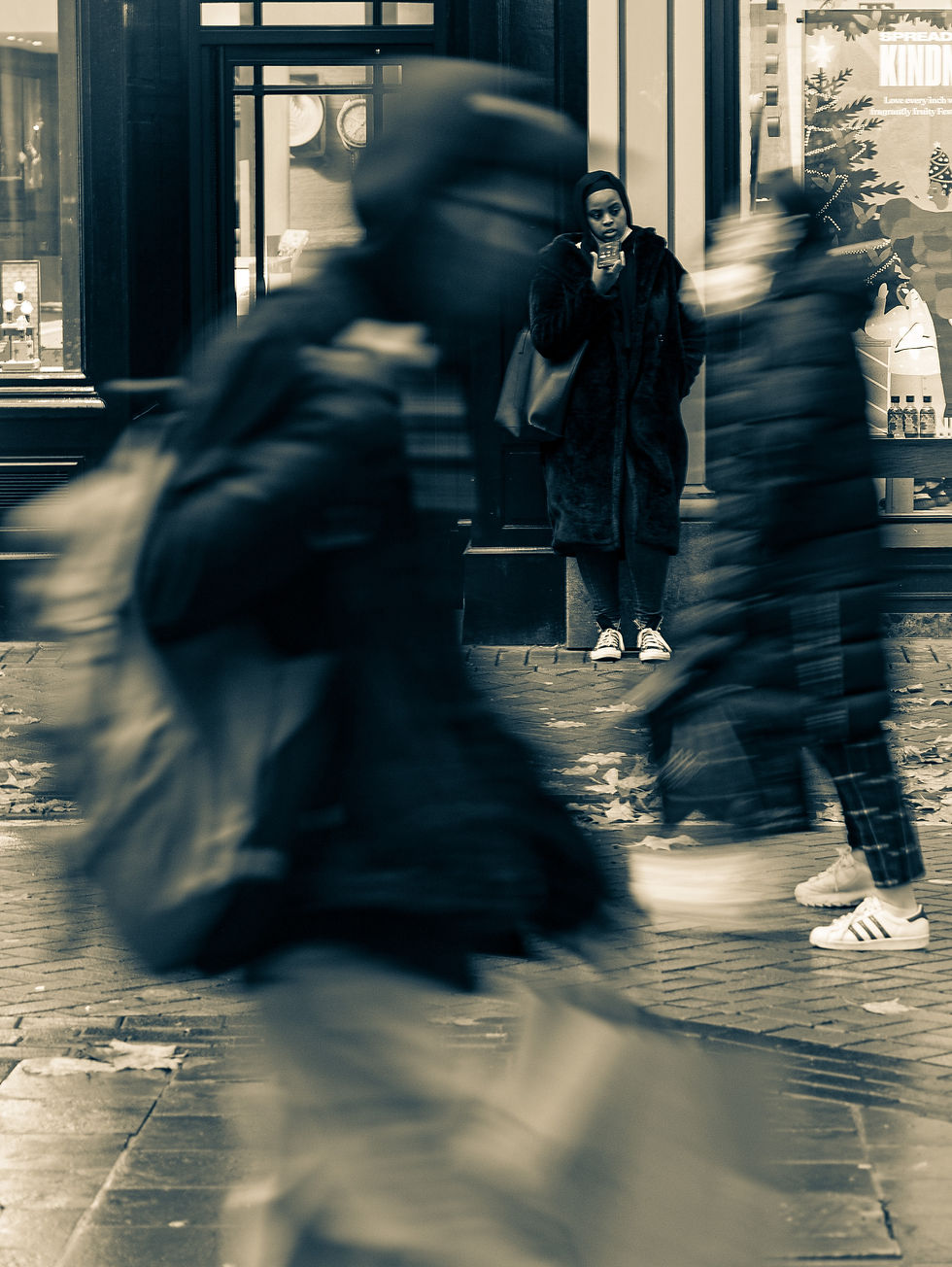Positions & Practice - Methods & Strategies
- stevenrabone
- Nov 6, 2020
- 3 min read
Updated: Nov 9, 2020

During our studies this week we considered the relationship that photography has with serendipity, that happy coincidence or luck that can take place at the point of capturing an image.
As part of a micro project I was keen to explore this in my work and set about capturing a range of different images in Birmingham.
As Henri Cartier Bresson is quoted as saying 'To me, photography is the simultaneous recognition, in a fraction of a second of the significance of an event' and the question must be posed how much is this down to the recognition of the event vs that happy coincidence that something just falls into place.
Take the above image that I took. I knew exactly what I was looking for. The girl with the mobile phone oblivious to me stood on the opposite side of the street waiting for passers by to frame her, their movement blurred with a slower shutter speed. I can absolutely relate to Henri Cartier Bresson's statement that I recognised what I was about to capture. I even timed the pressing of the shutter at the required fraction of a second.... and yet how much luck was involved in capturing the actual shape of the man coming from left to right?
Comments have been made about his slightly sinister look, the face mask and hat obscuring his face and the fact the other people then frame the girl with the phone. I really like this photo and I am not afraid to accept that serendipity for sure played a part in its final output.
That balance of luck is emphasised again by a second, and yet very different image captured on the same walk.

This shot is actually three consecutive images captured as a multiple exposure in camera. The final image creates an almost painterly effect, perhaps similar to those impressionist artists of the early 20th Century.
What intrigues me about this photo is that I could have taken the three photos separately and then edited them as layers in photoshop and got a similar result, but retaining full control of the image.
However by going with an 'in camera' take this image becomes the one single photograph and any one of the three exposures could have spoilt the effect. Similar to the first image, I knew what I was aiming for and recognised the event. But yet again there was a a degree of happy chance and luck that the image came out as I wanted. Whilst I did some editing to boost the colours and detail this is very much almost all out of camera.
Whilst I do not want to put both images purely down to luck, it is fair to say it was on my side for these two photographs.
As highlighted these shots were taken as part of a micro project shoot when I was tasked with only taking photographs of one street, namely New Street in Birmingham. Similar to the work of Robert Adams this is an example of psychogeography, which is loosely defined as how a place, more often than not urban, can be used to effect or influence an individual's psychological state, and how it can link to photography.
Roberts Adams limited his photography to nocturnal exploration of the suburbs around his home in Colorado in a series called Summer Nights Walking (1976-82). By limiting his boundary of exploration, in the same way I was limited to New Street, so Adams captured a very specific look and feel to his images.
This work also brings to mind a current photographer, Joshua K. Jackson who has just released a new body of work, Sleepless in Soho. Whilst suffering from a period of insomnia, Josh hit the streets of Soho at night with his camera and captured a host of vibrant images that could only have been taken at the time and place where he was.
Whilst I do not profess to being on a par with either Adams or Jackson's work, my recent trip to Birmingham and being limited to one specific location does now appeal to me as it forces a new behaviour in me. Why go chasing for that big shot, if you are missing plenty of equally important ones on the way.



Comments